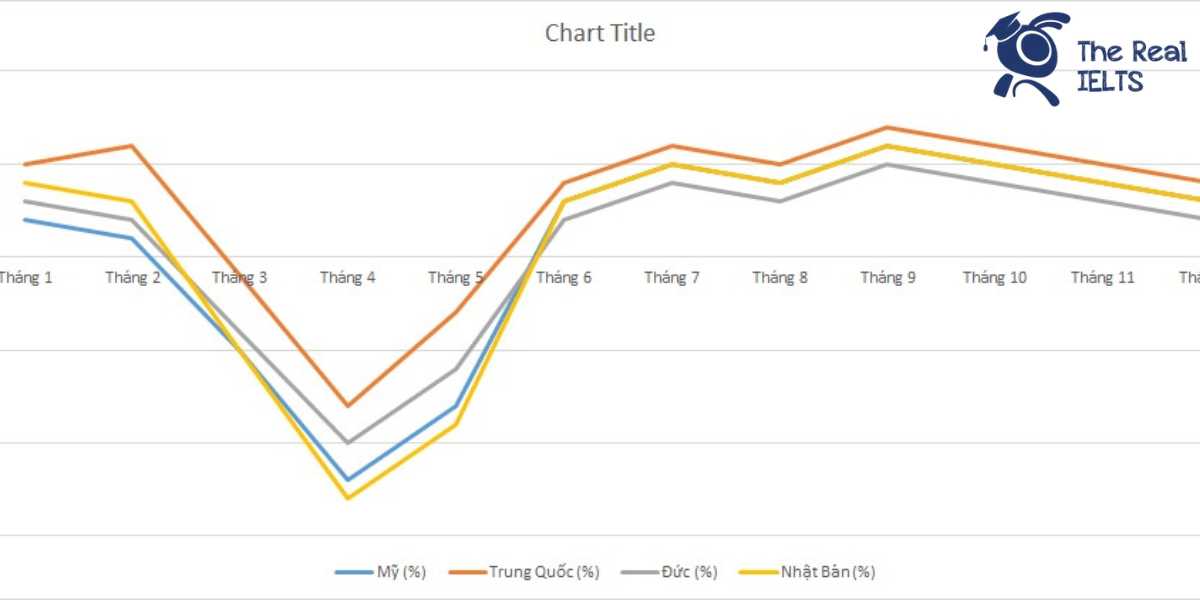Đề thi IELTS Reading có tiêu đề “The History and Importance of World Heritage Sites”
Nhớ đọc thêm các bài luyện thi IELTS nhé.
IELTS Reading:”The History and Importance of World Heritage Sites“
The History and Importance of World Heritage Sites
World Heritage Sites are landmarks or areas that have been recognized by the United Nations Educational, Scientific and Cultural Organization (UNESCO) as having significant cultural, historical, or natural value. The concept of World Heritage Sites originated in the early 20th century, following the devastation of World War I and II, which highlighted the need to protect and preserve humanity’s most cherished cultural and natural landmarks. The formal establishment of the World Heritage program occurred in 1972, with the adoption of the Convention Concerning the Protection of the World Cultural and Natural Heritage, often referred to as the World Heritage Convention.
The World Heritage Convention was born out of a desire to protect sites of outstanding universal value, ensuring that future generations could enjoy these irreplaceable treasures. The convention was inspired by the successful international campaign to save the temples of Abu Simbel in Egypt, which were threatened by the construction of the Aswan High Dam in the 1960s. This campaign demonstrated the power of global cooperation in preserving cultural heritage and laid the groundwork for the establishment of a formal mechanism to protect such sites worldwide.
The World Heritage Committee, established under the convention, is responsible for identifying and designating World Heritage Sites. The committee, composed of representatives from 21 member states, reviews nominations submitted by countries and evaluates them based on strict criteria. These criteria include the site’s cultural significance, natural beauty, and its ability to illustrate a significant stage in human history. Once a site is designated as a World Heritage Site, it becomes eligible for financial assistance from the World Heritage Fund and receives international recognition and protection.
The importance of World Heritage Sites extends beyond their historical and cultural significance. These sites also play a crucial role in promoting sustainable development, environmental conservation, and tourism. By preserving these landmarks, UNESCO helps to protect the biodiversity of natural sites and the cultural diversity of human societies. Furthermore, World Heritage Sites attract millions of visitors each year, contributing significantly to the local economies of host countries and raising awareness about the need for heritage preservation.
One of the most significant contributions of World Heritage Sites is their role in fostering global understanding and cooperation. These sites represent the collective heritage of humanity, transcending national borders and cultural differences. By recognizing and protecting sites of universal value, UNESCO promotes a sense of shared responsibility for the preservation of the world’s most important cultural and natural treasures. This sense of shared responsibility is particularly important in an increasingly globalized world, where cultural homogenization and environmental degradation threaten to erode the diversity and richness of our shared heritage.
However, the preservation of World Heritage Sites is not without challenges. Many sites face threats from urbanization, climate change, pollution, and armed conflict. For instance, the ancient city of Palmyra in Syria, a UNESCO World Heritage Site, suffered extensive damage during the Syrian civil war. Similarly, the Great Barrier Reef in Australia, one of the world’s most famous natural World Heritage Sites, is under threat from coral bleaching caused by rising sea temperatures. These challenges underscore the need for ongoing international cooperation and vigilance to protect these sites for future generations.
In conclusion, the history and importance of World Heritage Sites are deeply intertwined with the broader goals of cultural preservation, environmental conservation, and sustainable development. The World Heritage Convention has played a pivotal role in protecting some of the world’s most significant cultural and natural landmarks, ensuring that they are preserved for the enjoyment and education of future generations. As we continue to face new challenges in the 21st century, the protection of World Heritage Sites remains a critical global priority, reflecting our shared commitment to safeguarding the rich and diverse heritage of humanity.
Đề bài thi IELTS Reading
Multiple Choice Questions
- The concept of World Heritage Sites was formally established in:
- A) 1945
- B) 1960
- C) 1972
- D) 1985
- The campaign to save which site inspired the World Heritage Convention?
- A) Machu Picchu
- B) The Great Wall of China
- C) The temples of Abu Simbel
- D) The Eiffel Tower
- Which organization is responsible for identifying and designating World Heritage Sites?
- A) United Nations
- B) UNESCO
- C) World Bank
- D) The World Heritage Committee
- Which of the following is NOT a criterion for a site to be designated as a World Heritage Site?
- A) Cultural significance
- B) Natural beauty
- C) Ability to generate income
- D) Ability to illustrate a significant stage in human history
- World Heritage Sites contribute to local economies by:
- A) Attracting millions of visitors
- B) Encouraging local farming
- C) Reducing unemployment rates
- D) Providing education to locals
- Which World Heritage Site is mentioned as being under threat from climate change?
- A) Great Wall of China
- B) Machu Picchu
- C) Great Barrier Reef
- D) Taj Mahal
- The World Heritage Fund provides:
- A) Loans to member states
- B) Financial assistance to designated sites
- C) Scholarships for students
- D) Grants for local businesses
- The preservation of World Heritage Sites is considered a global priority because:
- A) They belong to a single nation
- B) They reflect humanity’s shared heritage
- C) They are sources of military strength
- D) They promote global trade
True/False/Not Given
- The idea of World Heritage Sites was developed after World War I.
- A) True
- B) False
- C) Not Given
- The World Heritage Convention was inspired by the failure to save the temples of Abu Simbel.
- A) True
- B) False
- C) Not Given
- The World Heritage Committee consists of 25 member states.
- A) True
- B) False
- C) Not Given
- UNESCO helps protect biodiversity by preserving natural World Heritage Sites.
- A) True
- B) False
- C) Not Given
- The Great Wall of China is mentioned as a World Heritage Site under threat from pollution.
- A) True
- B) False
- C) Not Given
- The preservation of World Heritage Sites requires both international cooperation and vigilance.
- A) True
- B) False
- C) Not Given
Yes/No/Not Given
- Does the author believe that cultural homogenization is a threat to World Heritage Sites?
- A) Yes
- B) No
- C) Not Given
- Is it the author’s opinion that World Heritage Sites should generate revenue for their preservation?
- A) Yes
- B) No
- C) Not Given
- Does the author suggest that World Heritage Sites contribute to reducing urbanization?
- A) Yes
- B) No
- C) Not Given
Matching Information
- Match the following events with their significance:
- A) Adoption of the World Heritage Convention
- B) Campaign to save the temples of Abu Simbel
- C) Establishment of the World Heritage Committee
i. Inspired the creation of the World Heritage program
ii. Formal establishment of World Heritage Sites
iii. Organization responsible for site designation
Matching Headings
- Match the paragraphs with the appropriate headings:
- A) The Birth of the World Heritage Program
- B) The Role of UNESCO in Heritage Preservation
- C) The Global Impact of World Heritage Sites
- D) Challenges Facing World Heritage Sites
i. Paragraph 1
ii. Paragraph 2
iii. Paragraph 3
iv. Paragraph 5
Matching Sentence Endings
- Match the sentence beginnings with the correct endings:
- A) The World Heritage Convention was inspired by
- B) World Heritage Sites play a role in
- C) The Great Barrier Reef is threatened by
i. sustainable development and tourism
ii. the campaign to save Abu Simbel
iii. coral bleaching due to rising temperatures
Sentence Completion
- The World Heritage Convention was adopted in the year ________.
- The successful campaign to save the temples of ________ demonstrated the power of global cooperation.
- The World Heritage Committee reviews nominations based on ________ criteria.
- By preserving World Heritage Sites, UNESCO helps to protect both cultural diversity and ________.
- World Heritage Sites attract ________ of visitors each year, contributing to local economies.
Short Answer Questions
- In which decade was the World Heritage Convention established?
- What international organization is responsible for the World Heritage Sites program?
- What is one of the main roles of the World Heritage Committee?
- Why was the campaign to save Abu Simbel significant in the history of World Heritage Sites?
- What financial support can designated World Heritage Sites receive?
- How do World Heritage Sites contribute to global understanding?
- Name one World Heritage Site mentioned in the passage that is under threat.
- What is one of the challenges mentioned that threatens World Heritage Sites?
Summary Completion
34-37. Complete the summary using the list of words below:
List of words: biodiversity, sustainable, cultural, conflict, pollution, local economies, destruction
The World Heritage Sites are of great importance as they promote ________ development and contribute to ________. However, many sites face threats from ________, urbanization, and ________.
Diagram Label Completion
38-40. Based on the passage, label the diagram of the World Heritage Sites program:
- Box 1: The body responsible for designating sites
- Box 2: The year the World Heritage Convention was adopted
- Box 3: A significant site that inspired the convention
Đáp án bài thi IELTS Reading
Multiple Choice Questions
- C) 1972
- C) The temples of Abu Simbel
- D) The World Heritage Committee
- C) Ability to generate income
- A) Attracting millions of visitors
- C) Great Barrier Reef
- B) Financial assistance to designated sites
- B) They reflect humanity’s shared heritage
True/False/Not Given
- A) True
- B) False
- B) False
- A) True
- C) Not Given
- A) True
Yes/No/Not Given
- A) Yes
- C) Not Given
- B) No
Matching Information
- A) ii. Formal establishment of World Heritage Sites
- B) i. Inspired the creation of the World Heritage program
- C) iii. Organization responsible for site designation
Matching Headings
- i. D) Challenges Facing World Heritage Sites
- ii. A) The Birth of the World Heritage Program
- iii. B) The Role of UNESCO in Heritage Preservation
- iv. C) The Global Impact of World Heritage Sites
Matching Sentence Endings
- A) ii. the campaign to save Abu Simbel
- B) i. sustainable development and tourism
- C) iii. coral bleaching due to rising temperatures
Sentence Completion
- 1972
- Abu Simbel
- strict
- biodiversity
- millions
Short Answer Questions
- 1970s
- UNESCO
- Identifying and designating World Heritage Sites
- It demonstrated the power of global cooperation in preserving cultural heritage.
- Financial assistance from the World Heritage Fund
- By representing the collective heritage of humanity and promoting a sense of shared responsibility.
- Great Barrier Reef
- Climate change, urbanization, pollution, or armed conflict (any one of these)
Summary Completion
34-37.
- sustainable
- local economies
- urbanization
- conflict
Diagram Label Completion
38-40.
- Box 1: The World Heritage Committee
- Box 2: 1972
- Box 3: The temples of Abu Simbel
Luyện tập bài khác ở bài viết:”100 bài luyện IELTS Reading 2024 – 2025“















